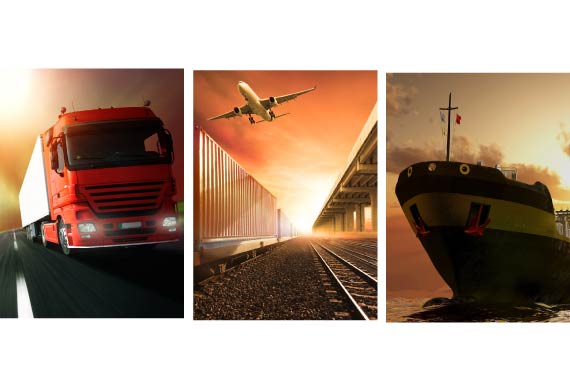
Multimodal transportation is the future
With conventional forms of transportation modes reaching their limits, there is a pertinent need to explore the potential that multi-modals offer in an era that demands an efficacious and highly competitive supply chain network. Lionel Alva… Infrastructure development is a critical enabling tool when it comes to logistics and the holistic development of a nation. […]

With conventional forms of transportation modes reaching their limits, there is a pertinent need to explore the potential that multi-modals offer in an era that demands an efficacious and highly competitive supply chain network. Lionel Alva…
Infrastructure development is a critical enabling tool when it comes to logistics and the holistic development of a nation. In an era of globalisation, market accessibility across geographical boundaries is increasing, thanks to the development of multimodal transport. Thus infrastructure that encompasses various modes like air, rail or even waterways becomes the backbone of a nation’s progress. And there is a certain expedient need to optimise existing modes of rail, road, waterways and air transport to work in a certain consonance to effectively achieve a country’s industrial goals. Furthermore, being that freight transport is a derived demand. It is therefore part of the economic process.
It is a daunting task indeed and there is a need to assess the various factors that influence the country’s logistics infrastructure. The faster transit of goods made possible under multimodal transport reduces the disadvantages of distance from markets and the tying-up of capital.
The requirements of industrial processes have changed drastically during the past 10 years and can be characterised by global competition, shorter production processes and product-life-cycles and the need to cut costs. Multimodal transportation, with the options of integrating multiple modes, provides a flexible response to the changing supply chain management requirements in global markets and distribution systems.
Hyper-competitive supply chains.
An integrated Multimodal transport system is highly imperative for the fastidious implementation and execution of a supply chain, especially in the context of international markets. The information and communications system in various modes of transport form the core of the supply chain network. Since the comprehensive ability to understand and assess the total supply chain capability and performance will place new demands on supply chain participants, including the transport system. New demands on the transport system will require a re-thinking of transportation policy and investment.
Thus, the internationalisation and globalisation of resources and markets will place demands on multi-modal transport in ways never witnessed before. Two- and three-party partnerships will give way to fully integrated supply chains. The competitive world of the future may well be centered between global supply chains and their supporting modal and Multimodal capabilities
“It is to envisage a fully integrated and seamless system composed of safe and secure transport modes, best in class services and infrastructure, helping innovation and fostering the competence of the industry. Thus, we have to create a single transport area in the European Union by completing the internal market and removing remaining barriers,” observes Siim Kallas, special adviser to the European Commission and the former European Commissioner for Transport.
Developing an efficient transport system offers several advantages. In the context of the European Union, with the projected growth of international trade, the possible extension of the Union to the Central and Eastern European countries and enhanced cooperation with the Mediterranean countries, the role of transport will become even more important.
The trend towards increasing transport demand - prerequisite for economic growth - is still challenging the European transport system as well as transport systems world over. On the other hand, Europe aims to reduce emissions dramatically. A crucial measure achieving this ambitious aim is to lower transport emissions by increasing the share of inherently more resource-friendly modes of transport.
This is especially pertinent with increasingly global supply chains that demand shorter lead times and better last mile connectivity that has impelled the need for mobility via multimodal forms of transportation as capacities for conventional forms of transportation continue to peak.
The Future is Now
Multimodal transport is not about forcing a specific modal split. However, by improving the connections between all modes of transport and integrating them into a single system, Multimodality allows a better use to be made of rail, inland waterborne transport and short-sea shipping which, by themselves, in many cases do not allow door-to-door delivery. Multimodality is, therefore, complementary to other transport policies such as liberalisation of transport markets. In the Asian context too, multi-modal forms of transportation are much sought after without the need for a tremendous modal divide.
Vivien Lau, managing director, HACIS, says, “Hacis’ SuperLink China Direct service offers two-way customs-bonded road feeder service, seamlessly connecting Hong Kong International Airport and China. Every day, Hacis has regular scheduled services to six IATA-coded Inland Cargo Depots (ICDs) in China: Shenzhen, Dongguan, Huangpu, Guangzhou, Xiamen and Fuzhou. All ICDs are located within Customs-bonded areas to facilitate further connection by land or air to other parts of China.”
While road, rail, air and waterways have unequal levels of performance and service quality, there is a need to explore oft uncoventional forms of transportation in a multi-modal transport mix.
This is due partly to intrinsic differences in their cost structures, but also to diverging levels of competition and liberalisation within each mode.
Kallas adds, “I firmly believe that inland waterway transport can be a valuable partner in logistics and supply chains while also making an environmental difference. Inland waterway transport is an asset as a cost and energy efficient, ecological and safe transport mode. It produces significantly lower external costs and consumes less energy than road and rail. It contributes less than one percent to the greenhouse gas emissions of all transport modes in the EU.”
Ultimately, a fully-integrated transportation system would create a more efficient, environmentally friendly, and economical solution for users in cities across the globe in the future.

